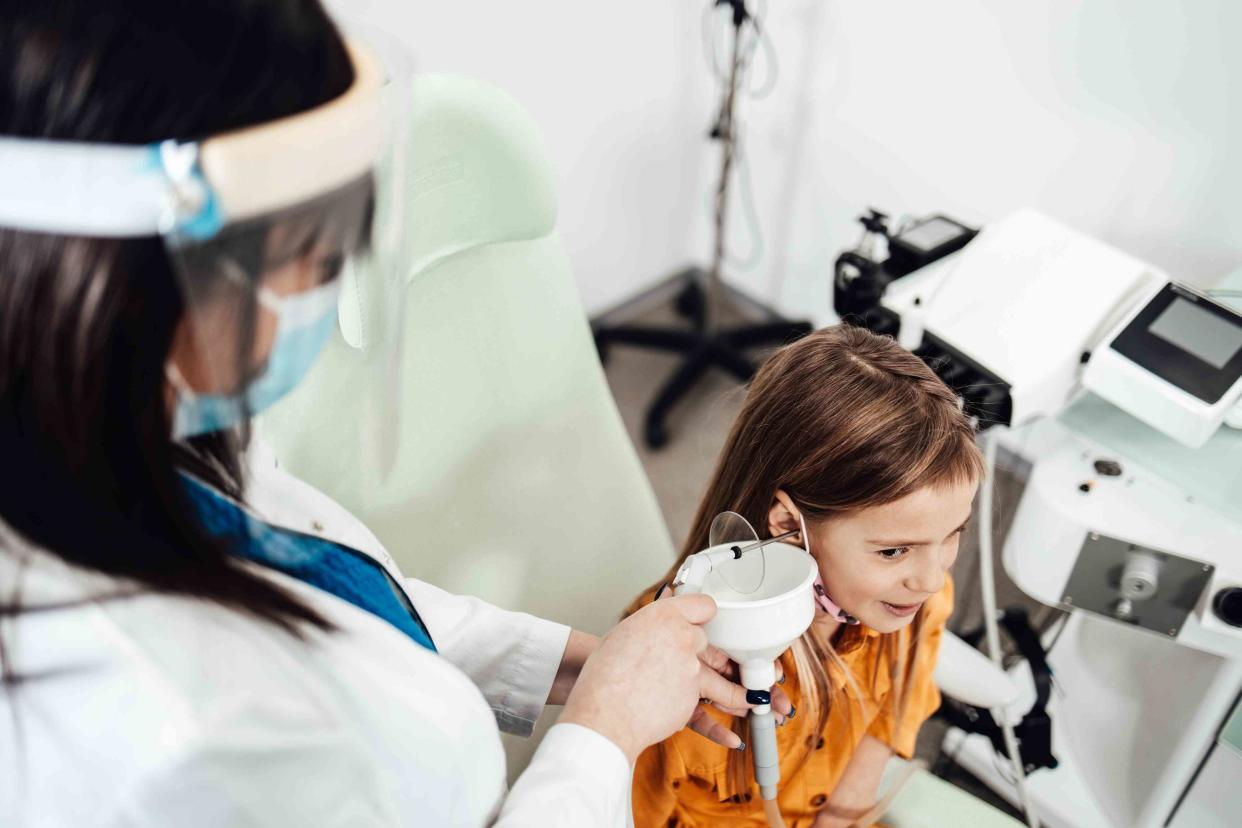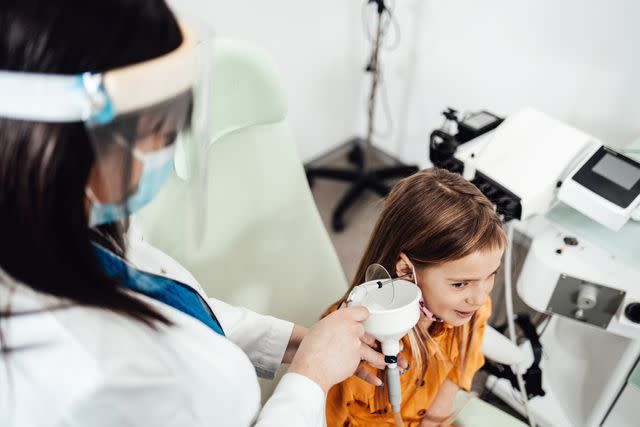Pros and Cons of Ear Irrigation

mladenbalinovac / Getty Images
Medically reviewed by John Carew, MD
Ear irrigation is used to soften and remove earwax (cerumen) buildup. Depending on your health, it can be done at home or may require a visit to a healthcare provider.
Earwax is a natural bodily substance that protects ears from infection and provides a barrier against water and debris. It usually clears from the ear naturally, but there are circumstances when earwax builds up and can cause pain, a feeling of ear fullness, itchiness, and hearing problems. Earwax buildup (cerumen impaction) is estimated to affect 10% of children, 5% of healthy adults, and up to 57% of people living in nursing homes.
This article will compare the pros and cons of ear irrigation and help you determine whether you can try it at home or should see a healthcare provider.

mladenbalinovac / Getty Images
Related:The Anatomy of the Ear
Reasons You Might Need Ear Irrigation
Irrigation is primarily done when a healthcare provider has determined that cerumen impaction is present. If a healthcare provider can't see the tympanic membrane (ear drum) due to earwax buildup, they might recommend ear irrigation.
Irrigation is one of the techniques used to remove earwax from the ear canal. It can be done at home or by a healthcare provider using body-temperature water. If the water temperature is too cold or too hot, complications, such as dizziness or damage to the ear canal, can result.
During ear irrigation, the healthcare provider uses a syringe to direct the water into the ear canal. Note that the syringe tip should not enter the ear canal. Many commercial ear irrigation kits are available for home use. However, there is no evidence that a commercial kit does a better job at dislodging a cerumen impaction over the syringe technique.
Risks and Complications
There are some risks associated with ear irrigation. The most common risks include:
Dizziness, especially if the water is not close to average body temperature
A tear or hole (perforation) in the tympanic membrane, which can cause damage to the middle ear
An external ear infection (otitis externa)
Cerumen removal should be done cautiously when certain health conditions are present:
Immunosuppressive illnesses, such as human immunodeficiency virus (HIV) or diabetes, or a history of transplants, due to the potential for infection.
Individuals taking anticoagulation or blood-thinning medication are prone to bleeding or hematoma development.
Ear anatomy abnormalities, such as ear canal narrowing or scarring, make irrigation challenging outside of a healthcare setting.
Avoid using a jet or pressurized ear irrigator if you attempt ear irrigation at home. These devices can damage your ear and should only be used by qualified healthcare providers.
How Do You Flush Your Ears With Water?
Irrigating ears can be done at home with a few supplies:
Water that is close to average body temperature
A syringe
A container held below the ear to catch any excess water
Ear irrigation requires two people. Once you obtain supplies, follow this process:
Have the person receiving the ear irrigation sit up straight.
Draw warm water into the syringe.
Grasp the outer part of the ear and gently lift the ear up (toward the top of the head) and back (toward the back of the head) to straighten out the ear canal.
Place the syringe at the opening of the ear canal but not inside of it.
Gently push on the end of the syringe and slowly put water into the ear canal.
Water should run out of the ear canal freely into the container the person receiving the ear irrigation holds. Often, pieces of ear wax can be seen in the water.
Ear irrigation should be done for approximately 15 to 20 minutes. If earwax buildup is still present afterward, you should see a healthcare provider to prevent any ear trauma or infection.
Using an Irrigation Kit vs. Seeing a Healthcare Provider
It is safe for some people to do ear irrigation at home using a manual syringe method or a commercially prepared ear irrigation kit. However, the following circumstances indicate the need for a healthcare provider to remove earwax buildup:
Eardrum perforation or a history of ear disease: Irrigation should never be done if you have a history of a hole in your eardrum, ear surgery, previous cerebrospinal fluid leakage (CSF otorrhea), recurrent ear infections or ear symptoms of any kind.
Children or people with cognitive impairment: Ear irrigation requires the patient to be still to prevent trauma, pain, and infection. Using sedation is often necessary to keep the individual still. These methods should only be done under a qualified healthcare provider's supervision.
Ear anatomy abnormalities: Trauma, surgery, certain cancer treatments, or conditions present at birth can alter the anatomy of the ear canal, making at-home ear irrigation challenging.
Prolonged at-home ear irrigation: If at-home irrigation does not result in the removal of cerumen impaction after 15 to 20 minutes, see a qualified healthcare provider for further care.
The American Academy of Pediatrics does not recommend at-home ear irrigation on infants. If a parent suspects cerumen impaction in an infant, contact a pediatrician for in-office evaluation and treatment.
Alternative Ways to Irrigate Ears
Use caution when removing earwax buildup. The following methods of removing earwax are not recommended because there is no scientific evidence they are effective and have the potential for adverse outcomes such as trauma, pain, or infection:
Olive oil drops or sprays
Summary
Ear irrigation is one way to remove and prevent earwax buildup. Earwax (cerumen) is a normal bodily substance that protects your ears from infection, water, and debris. Ear irrigation can be done safely at home, manually with a syringe, or using a commercially prepared ear irrigation kit. Use water close to average body temperature and a gentle technique to instill water into the ear canal and avoid ear damage.
If at-home ear irrigation is not successful after 15 to 20 minutes, or the person needing the ear irrigation is at high risk for infection or bleeding, see a healthcare provider who can safely address the earwax buildup.

